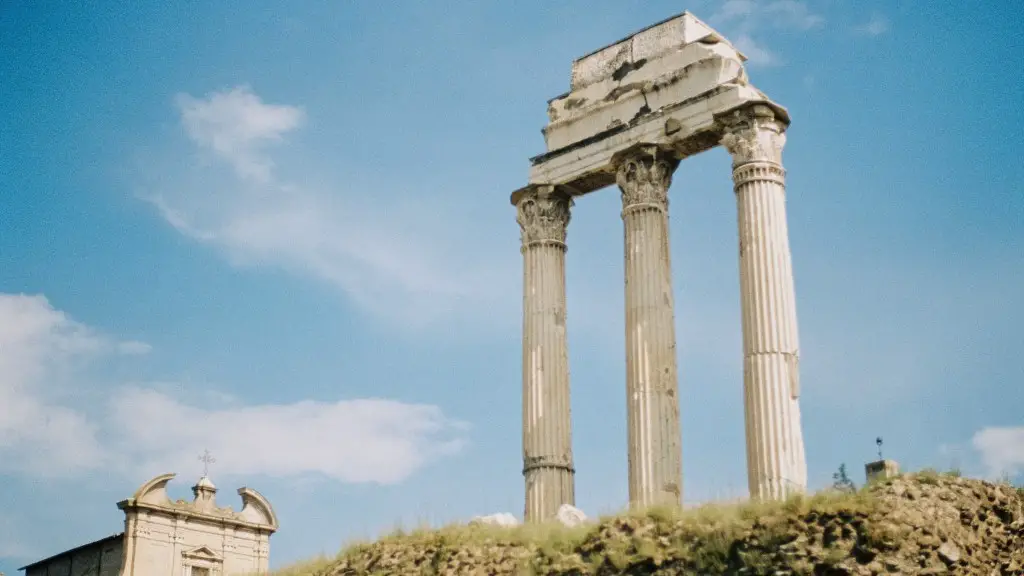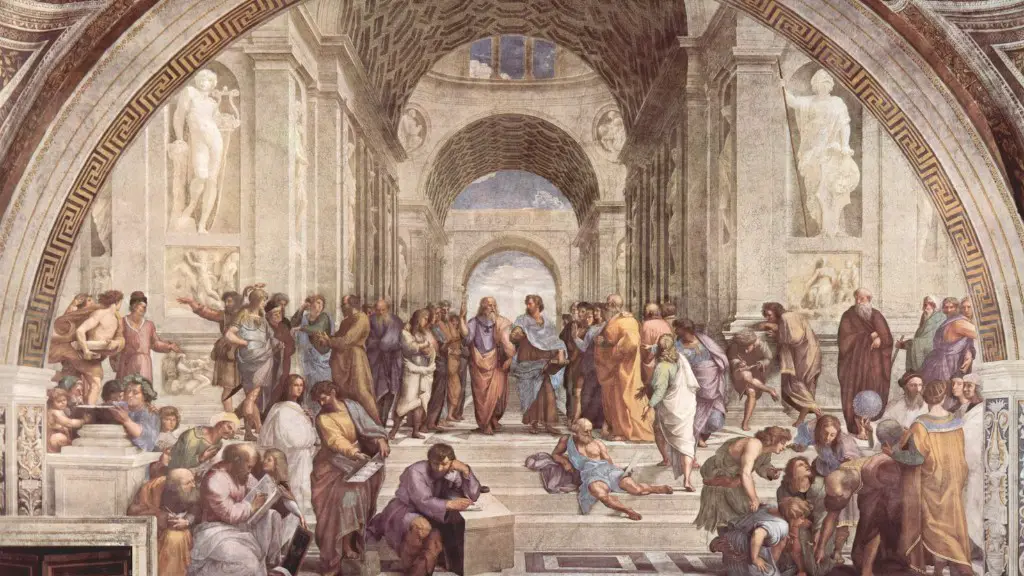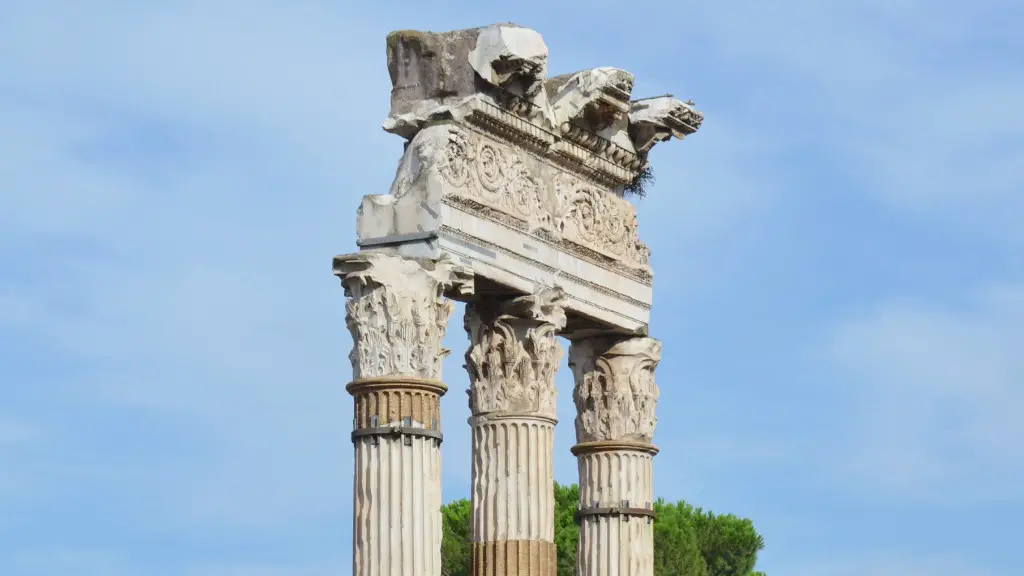Economic Infrastructure
Ancient Rome had an impressive economic infrastructure for its time. Roman law was a complex and widespread system of taxation, controls and regulations. It is well known that Roman law set the foundations for economic systems in many parts of the world today. Roman coins were a form of currency with gold and silver coins that held significant worth and influence in the Mediterranean world for centuries. Throughout the empire, a complex network of roads developed in order to facilitate trade, transport and communication in the Mediterranean. Roman ports were bustling economic centers, and the ports were essential locations for international trade.
Labour System
The labour system of ancient Rome was predominately agricultural, although craftsmanship and domestic production of goods was widespread. Most labour was offered in exchange for a small fee. The wealthier and higher classes of Roman society such as the patricians and the upper middle classes and professional guilds offered their labour for a much higher fee. Roman slavery was mostly prevalent in areas such as mining, public works and domestic production of goods. It was not uncommon to have slaves within the family structure, and the number of slaves within the Roman Empire is estimated to be between 60-80 million.
Trade Networks
The Roman Empire had a vast trading network with many of its provinces and neighbours. The trading networks were based on barter and selling goods, although many goods were passed through as gifts or part of treaties. Wheat, wine and olive oil were among the most commonly traded goods. Other goods such as minerals, metals, precious stones, clothing and furniture were also traded. Maritime trade was an important factor to the Roman economy, with the Mediterranean providing a safe and efficient route for goods to travel around the empire.
Economic Policies
The Roman economic system was heavily regulated and centrally planned. Roman economic policies were aimed at regulating trade and production, protecting consumers and controlling prices. Taxes were the primary form of income for the Roman state. Taxes were imposed on goods, services, and property. There were also indirect taxes such as customs duty and tolls. The Roman Empire issued a uniform currency in order to control the banking system and help regulate the overall economy.
Economic Freedom
The Roman economic system was highly regulated, but it was still relatively free compared to other ancient societies. Private ownership of property was allowed and encouraged. Craftsmen, traders and entrepreneurs were able to open their own businesses. Interest rates and prices were fairly fixed and uniform, although citizens still had the freedom to negotiate prices in some cases. Rome also implemented a welfare system, which provided grain and other goods and money to poorer citizens.
Overall View
The economy of ancient Rome was highly regulated, yet still relatively free compared to other ancient societies. Roman law helped set the foundations for economic systems in many parts of the world today. The trading networks of Rome were extensive and enabled a large proportion of the population to benefit from international commerce. The Roman economy relied heavily on the agricultural sector, although there was some freedom for enterprise and small business. Roman economic policies enabled citizens to negotiate prices, protect consumers and regulate trade and production. Overall, the economic system of ancient Rome was a fascinating one that has had a lasting impact on modern economies.
Social Aspects
The economic system of ancient Rome was closely linked to the social structure of the empire. Roman citizens were primarily divided into classes of patricians, knights and plebeians. Each class was subject to different forms of taxation, which helped the state to maintain control of the economy. The wealthy and powerful classes exploited their positions of wealth and power to gain greater economic privileges. The lower classes were largely neglected by the government and their rights were often disregarded. Roman taxation was high, which meant that the wealth of Rome was highly concentrated in the hands of a small number of citizens.
Government Spending
Government spending was an integral part of the Roman economy. The Romans invested heavily in public works such as roads and bridges, irrigation systems and aqueducts. The military was also a major source of government spending. Rome invested heavily in its military to ensure that its citizens were safe and to enable it to maintain control of its vast empire. The government also provided social services such as free grain and other goods and money to the poor. Overall, government spending was a major component of the Roman economic system.
Economic Legacies
The economic legacies of the Roman Empire can still be seen in modern economies. Roman law helped set the foundation for the economic systems we have in place today. The Roman trading networks stretched across vast distances and provided a model for many of the international trading systems in use today. The Roman coins and uniform currency that it employed heavily influenced the contemporary banking system. The investment in public works, infrastructure and military of the Roman Empire enabled it to achieve a certain degree of economic stability and prosperity. These legacies are still observed in modern day economies.
Monetary System
The Roman monetary system was based on a ratio of gold to silver coins. Gold coins such as the aureus and solidus were issued by the government and held considerable worth. Silver coins such as the denarius were also employed, but their worth was much lower than that of the gold coins. Roman taxation was based on these coins and their value, and taxes were often required to be paid in silver. The Roman monetary system enabled citizens to trade, borrow and lend with relative ease, although the wealthy classes held most of the economic power.


